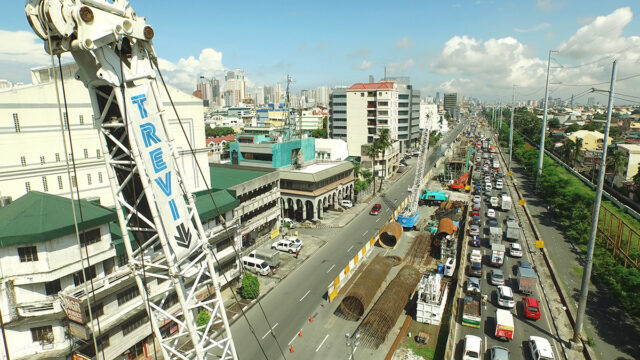President Ferdinand Marcos Jr. has announced details of his Build Better More infrastructure plan and the public now has an idea of what is being prioritized over the coming years. The National Economic and Development Authority (NEDA) Board approved 194 high-impact priority projects as part of the government’s program.
But there is a lot more to know about the Philippines Build Better More infrastructure plan. With that in mind, here are some answers to the most frequently asked questions regarding the program.
Also Interesting: What are the longest bridges in Southeast Asia?
What is the Philippines Build Better More infrastructure plan?
Build Better More is an infrastructure plan created by President Ferdinand Marcos Jr. and the NEDA Board he oversees. With the country in dire need for across-the-board improvement, nearly 200 projects were included. A complete list hasn’t been made public yet but is expected shortly.
The massive construction activities should come with a number of benefits, including the creation of new jobs and making the Philippines more attractive to foreign investment.
Is Build Better More different from Build, Build, Build
Yes and no. Former President Rodrigo Duterte spent a great deal of time and effort in pushing out Build, Build, Build which, like Build Better More, was focused on improving infrastructure in the Philippines. The difference between the two initiatives is related to what projects are included.
A total of 71 projects have been rolled over from previous administrations with some of these, such as the Metro Manila Subway project and North-South Commuter Railway, already under construction. However, the ‘Build Better More’ has identified more than 120 other infrastructure improvements it will focus on. That means Build, Build, Build projects that were approved but never started are set to be scrapped.
What new projects are included?
The most notable project announced is the rehabilitation of Ninoy Aquino International Airport (NAIA). Not only is this much needed, but it also potentially rules out the government shutting down the airport and selling the land once New Manila International Airport opens.
Several rail and hospital projects have been included in ‘Build Better More’ as well as the Metro Cebu Expressway. The 74-kilometer expressway is seen as a vital addition to the region which continues to suffer from congestion that could potentially hamper economic growth.
How will these projects be financed?
Financing will be key to getting these infrastructure projects off the ground. The Marcos administration is looking to promote public-private partnership (PPP) schemes as one way to get work started sooner rather than later.
“The government shall harness the financial and technical resources of the private sector, which allows the public sector to allocate its funds for greater investments in human capital development, especially to address the scarring in health and education due to the pandemic and provide targeted assistance that protects vulnerable sectors from economic shocks,” Socioeconomic Planning Secretary Arsenio Balisacan told Inquirer.net.
Additionally, Build Better More projects are set to be prioritized under the government’s annual budget preparation.
Will all these projects be completed?
Highly unlikely. That is something the Marcos government has essentially admitted. Its goal is to instead get as many Build Better More projects financed and started as this increases their chances of being completed. As seen with the 71 projects carried over from previous administrations, a new government tends to continue work on anything already in motion. On the other hand, projects in the planning stages are easier to cancel.
This doesn’t mean nothing will get finished in the next few years. There are a few extremely urgent things the current administration will look to get over the line before the next election if not sooner.
Keep Reading: Why does the Philippines need to develop tourism-focused real estate?


































